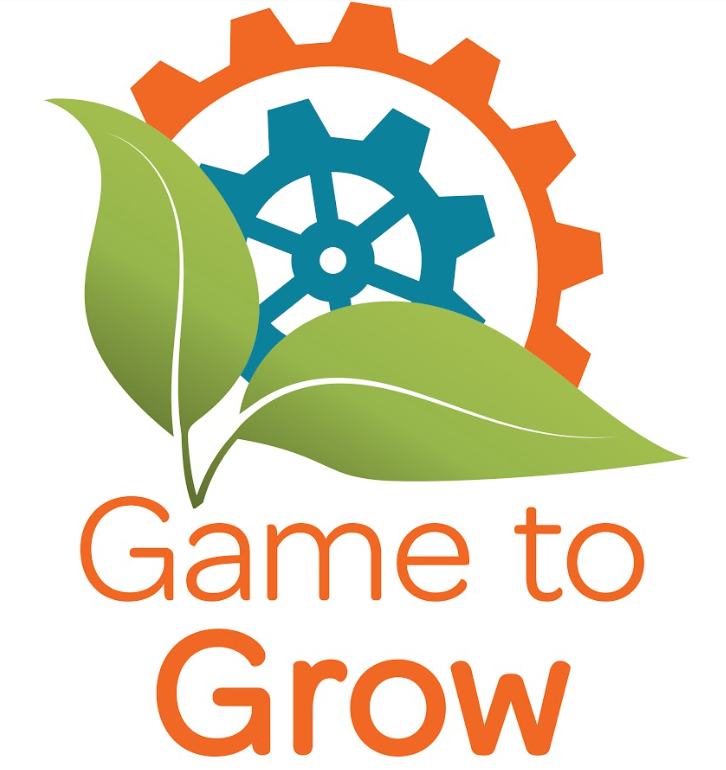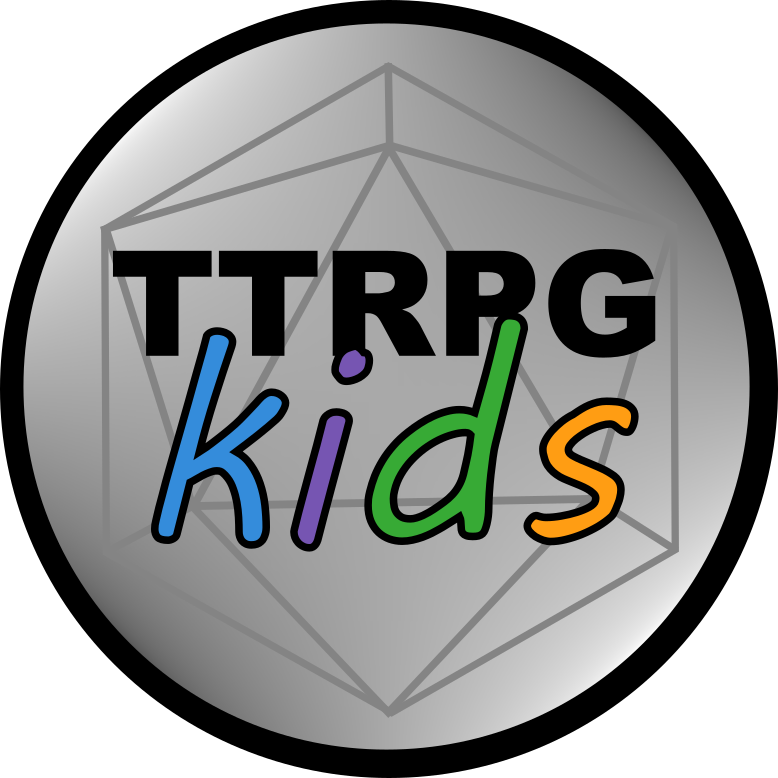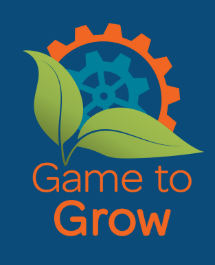Interview with Adam of Game to Grow and Critical Core!
Note: This post may contain affiliate links. At no additional cost to you, I may earn a small commission from purchases made using them. TTRPGkids uses this to keep the site going. Read full disclosure here.
Jump to:
- Introductions
- Game to Grow
- Adam’s TTRPG experience
- Favorite in-game moments
- Critical Core
- Education in gaming
- Advice for running TTRPG’s with kids and new players
- Links
Can you introduce yourself?
Sure! My name is Adam Davis. I have a master’s degree in education with a specialization in drama therapy, and I am a founder and executive director of the non-profit organization, Game to Grow.
Game to Grow is a 501c3 non-profit based out of the greater Seattle area. Our mission is dedicated to games of all kinds for educational, community, and therapeutic growth. We are most well known for our therapeutic use of games like Dungeons and Dragons and Minecraft to help people build social confidence and grow socially on their own terms.
We also have a training program where we’ve had a few hundred therapists from all over the world go through our program. We also have a program for educators and community members who are looking to make their corner of the world a little bit better with games.
Can you tell us about Game to Grow?
Game to Grow is actually built as a non-profit out of a very small for-profit that I ran alongside Adam Johns who is the other co-founder of Game to Grow. We actually first started Wheelhouse Workshop in 2013.
We were in grad school – I was studying education and drama therapy, and he was studying family therapy – and we were running an after school program that was for kids who needed a little help connecting with other people. The program that we ran was a Dungeons and Dragons and improv program, so it was perfect for our geeky backgrounds and my background as an actor and performer.
We could see right away, as we were studying in grad school how to help people, that these games and activities were helping people. We were making so many discoveries, largely by accident, infusing what we were learning from our school programs. We realized we could do more if we left that program and started our own thing. So, we started Wheelhouse Workshop and ran that for a few years and then realized that the proof of concept was clear. We were helping people, but there was only so much we could do with just the two of us.
From there, we transitioned that into the non-profit, Game to Grow, and we received a grant from Child’s Play Charity to get us started. We got an office space and started hiring people. The rest is sort of history! We now have 150 participants per week from all over the world who attend our programming. Because everything is virtual right now, we are no longer bound by geography, so we have participants from all time zones across the United States, from Australia, from Europe, parts of Asia, so it’s really an international program now.
Can you tell me about your tabletop RPG experience? How did you start playing?
So, I am from Texas, and the first time I started playing was with my older brother who taught me how to play at boy scout camp. I was one of those classic cases where an older brother or cousin got them into the game.
My entrance into tabletop role playing games was very casual. We used to hang out at the mall, because I was from a small town, and read all of the D&D books all day. I think 1993 was when I first learned about these games. I went through a really strong phase in middle school when I was reading the Dragonlance books – everyone else was writing band names on their binders and backpacks and I had Dragonlance and Raistlin Majere on mine.
I got into theater shortly after that, and I really got a lot of what I was getting out of tabletop role playing games out of theater, so I didn’t really play for a few years. It wasn’t until I was in grad school, or maybe right before grad school, that I got back into it. I basically took a leave of absence through undergrad until I could really combine all of my love for theater and story and into what I was doing with tabletop role playing games.
With my background being in drama therapy, I was a drama teacher for sometime, but my real first love for theater was political theater and participatory theater. That’s the kind of theater where the audience gets to join in on the show and participate. Leveraging that framework for tabletop role playing games was really a perfect synthesis for what I loved about participatory theater, education, and therapy and turning that into what Game to Grow now does.
What are some of your favorite in-game moments?
So, I have 10 years of experience with being a professional game master between Game to Grow and Wheelhouse Workshop, so it’s really hard to pick.
From my personal life, this was in my adult phase when I first got back into it, our team of adventurers was trying to cross this checkpoint. I was playing a character who was supposed to be pretty charismatic, so I went up there to try and talk my way past this checkpoint. We had decided that if things went awry, my character would pull on his earlobe and that meant that that wizard would cast fireball, and we would run for it.
I went up to the checkpoint, and I rolled a critical fail on my charisma check. Before the DM even described what happened on my roll, I just pulled on my earlobe, and we just blew that checkpoint to smithereens! And the game master was wide-eyed, jaw-dropped… the roll wasn’t that bad!
That moment of pulling on my earlobe and just blowing up this checkpoint became a thing that we would talk about for years after. Pulling on our earlobe became a thing then for whenever there was something we didn’t want to do. We’d be like, “gosh, I wish I could just blow this up with a fireball right now!” whenever we were talking about whatever mundanity of life like getting stuck in traffic or something like that.
That moment was such a small and insignificant moment in the game, ultimately, but it became a touch point that brought our group together. It was like a cultural language that these games are so good at creating and made that such a fun moment. It wasn’t just something that happened on a Friday night at my friend’s house, that was something that brought us together for years because we had that shared story and shared language.
As far as professional games that I’ve run with youth, there’s so many. This particular story is now built into Critical Core. This one was such an important moment that we sort of archived it.
The storyline is called the Age of Green, and, in it, the plants are taking over the world. Before the Age of Tools, which is the modern era, was the Age of Dragons, and before the Age of Dragons, was the Age of Green, where the plants ruled the entire material plane. The plants are now getting back and taking over again, and the heroes need to figure out how to prevent that.
Naturally, they go talk to the dragons and see how the dragons fought back the Age of Green the first time. At some point in their journey, they are speaking to a dracolich to get their help. The dracolich says, “why should I help you? I am the last of my kind. I have no family. I have no friends. There is nothing in this world that I like or that I want to protect.”
I had set up this moment as a “deal with the devil” situation. This is a villainous creature that they needed to convince to help! But that’s not what happened. One of my players spoke up and said, “wow… that sounds a lot like me. I also don’t have any friends, and I’m lonely sometimes too.”
Then, that dracolich that was supposed to be evil became a sympathetic character, and they helped that character find friends. They helped that character leave the cave… and create more dracoliches. That character became someone that they wanted to connect with. It was one of those moments that reminded me of how to be flexible as a game master, but also how beautiful the emergence of some of those moments can be.
I wasn’t attached to my story, and I allowed that character to shift and allowed that player to drive the story. That player then retired their character at the end of the campaign in order to be the mother of the dracolitch’s children because the dracolich had died in the course of the story, but the babies were born. This character went on to protect the next generation in honor of that dracolich character. That storyline has stuck with me for years now because of how transformative it was for both me and the player.
Can you tell me a bit about Critical Core?

Critical Core is a true labor of love. It was a kickstarter project that was funded in eight hours. The origin story roots back to years and years before that.
Adam Johns and I had been running Wheelhouse Workshop for a while, we had done some consultations, we had done some training. What we learned was that we can convince people that they should do it, but the struggle was learning how to be a good game master for a sensitive population to achieve outcomes is actually five steps in.
You have to learn how to play the game, then learn to be a game master, then learn to be a good game master, then learn to be a good game master for a sensitive population, then learn to be a good game master for a sensitive population to achieve outcomes.
That’s a long journey.
Critical Core was built because we wanted to cut out the learning curve for a lot of new facilitators and game masters, be they parents, teachers, or therapists. This way they can get right into the game and utilize the magic of life enriching social play.
Adam already had this idea back in 2014 or 2015, and then we received an email from Virginia Spielmann, who is the executive direction of Star Institute Colorado, and is very involved in sensory processing and working with autistics and who is autistic herself. She reached out because she was living in Hong Kong at the time and working as a consultant, Gavin, at an ad agency there where they fund passion projects for creatives. One of the individuals there had a passion for helping autistic youth make friends, build social skills, etc. They talked and asked how they could do something to help Virginia.
Virginia told them to definitely try tabletop role playing games and then connected with us. So, we started as a group of four and grew from there with this idea for Critical Core. Based on that, we built what is a beginners box for therapeutic role playing games.
The kit itself has a couple of things in it. It comes with a simplified rule set that is built on the open gaming license from Dungeons and Dragons, so it is very similar to 5th edition in that it has a d20, strength, dexterity, etc, but the rules are much more simplified.
We built Critical Core by modifying the game in the same way we’ve always been modifying it. We ignore a lot of the rules that are cumbersome for players. We also don’t build characters with our players unless they have some experience, so we just took character creation out of Critical Core.
In addition to the simplified rule set, we also have a facilitator’s guide that talks about tips and tricks and session structure that we’ve been doing for the last decade.
We also have a module design – that is the really cool and transformative part. In the storyline, which the Age of Green is part of that, every encounter in the game is only a two page spread. We have a structure in the game called the D.O.T.S narrative system where every element is a dot in the story, so the game master only ever has to have the book open to a solid two page spread. They don’t have to flip through the book to find the stats for the creature or anything like that. It’s all right there in front of them.
Then, every encounter is directly tied to what we call the core capacities. These are what we look at as the building blocks for social confidence. When we are trying to help our participants make friends, connect with the world around them, etc, we aren’t teaching them direct skills like how to make eye contact or a good first impression, we’re helping our participants build regulation skills, perspective taking skills, helping them understand planning and collaboration and pretend play and so on. This helps build that social confidence and translate to other parts of their lives.
That’s very commendable including those teaching moments into the game, almost like sneaking it in there, right?
It’s actually about proving that learning can be fun. Learning and work don’t have to be “not fun”. Part of the magic of this whole process is play for play’s sake. We’ve had parents echo what you’re saying that this is like tricking kids to eat their vegetables, and I love that framework, but it still relies on this understanding that vegetables can’t be delicious.
Part of this is that we’re working with a population that may struggle connecting with other people because they haven’t had positive experiences with that. Therefore, connecting with other people is work, it’s hard, it’s anxiety inducing, and they don’t want to do it.
What we are doing is allowing them to connect with other people and make friends within a play-space in the game that makes it fun and worthwhile. That way, in other parts of their life, they will have a catalog of experiences that are counterfactual to the negative experience they’ve had. They have corrective experience with that social space.
What advice do you have for people who are looking to start tabletop RPGs or maybe run tabletop RPGs for new players, especially kids?
Play, and I don’t mean to pull out the game rules and go through procedurally, I mean to remember that this is play.
When you’re dealing with brand new players or facilitators or game masters, there’s a desire to be right or in a style that someone else has laid before you. However, I always want new players and game masters to remember that the point is to play. They should check in with themselves to see if they are enjoying or if they are gaming.
There’s a distinction there, and I hope that the brand new players can recognize that spark that happens when you forget about the rules a little bit. Maybe you forget that you aren’t quite as good as Matt Mercer or whatever. When you lose yourself and lose the rules a bit, that’s when you’re truly playing.
When introducing TTRPG’s to youth, you open up that looking glass, you go into Wonderland and join them there. As the game masters shepherding new players into this community and hobby, we have a responsibility to pass on the importance of play. The magic is the play.
Rules are great, but they are just the structure inside which we get to be. Number crunching can be fun – I can play with numbers! But if my response to this game is anxiety because I have to make sure that the numbers I roll are exactly perfect and the math has to be exactly right, then we aren’t playing, we are stressing.
The north start that we always want to connect to is unstructured narrative play.
Thank you again for the interview! It was a pleasure talking with you!

For more informaton on Game to Grow or to sign up for a game or class, check their site out here, and check out here for the TTRPGkids review of Critical Core!
If you liked this post, make sure to subscribe to the TTRPGkids monthly newsletter to stay up to date on the latest reviews, tips and tricks, game and podcast list updates, and more! Thank you for playing tabletop RPGs with your kids and sharing this awesome hobby with the next generation!


Wow, great blog. Really Great.
Thank you!
Wow! This can be one particular of the most helpful blogs We’ve ever arrive across on this subject. Basically Great. I am also an expert in this topic therefore I can understand your effort.
Awesome! I am really glad the blog is helping and the effort is appreciated – I am grateful for the praise especially from someone with topic XP!